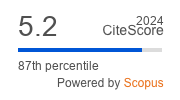Article | Open Access
Plea for an Emic Approach Towards ‘Ugly Movements’: Lessons from the Divisions within the Italian Pro-Life Movement
| Views: | 5222 | | | Downloads: | 3101 |
Abstract: Studies of the pro-life movement have invariably been undertaken in relation to the pro-choice movement. The stress on comparison has tended to homogenize the two sides, thus understating their internal differences. This article extends beyond an analysis bounded by a movement―countermovement dichotomy. Based on ethnographic data and on the Italian case, it considers several questions that arise from revealing the intramovement divisions at various levels. First, there are tensions relating to the relationship between orthodoxy and institutionalized politics: how far, if at all, should there be doctrinal compromises in exchange for influence over public policy? Secondly, the conflicts over modes of action. In this respect, should protests be visible in public spaces, and if so how? These two issues govern the tense relationship between the Movimento per la Vita and more radical groups. Thirdly, the issue that divides the Movimento itself; the ongoing dialogue over the attitude to be taken towards contraception, and thus sexuality. At the heart of these intramovement struggles is the definition of what a ‘real’ pro-life movement is, and how a ‘real’ pro-life movement should mobilize. This article reveals a complex and highly fragmented image of the pro-life movement that, like every social movement of a certain size, is heterogeneous in its demographic composition, objectives and strategies. To show this complexity, the article adopts an emic approach that does not limit itself to a reading of conservative movements through the eyes of progressive movements.
Keywords: abortion; anti-feminism; countermovement; emic; ethnography; intramovement conflicts; Italy; pro-life; ‘ugly movements’
Supplementary Files:
Published:
© Martina Avanza. This is an open access article distributed under the terms of the Creative Commons Attribution 4.0 license (http://creativecommons.org/licenses/by/4.0), which permits any use, distribution, and reproduction of the work without further permission provided the original author(s) and source are credited.


